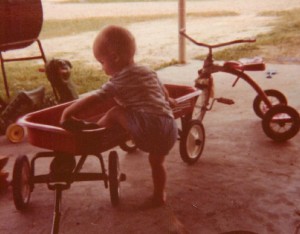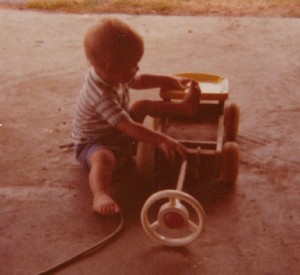
 Ever since I can remember, I’ve preferred to work things out for myself. What child doesn’t? Very few, from my experience. “I want to do it!” is a statement continuously heard by parents and caregivers. That is, until the activity becomes routine and obviously monotonous. Problem solving is a skill necessary to achieve success in life. It is a skill that runs the gamut from stacking blocks and climbing trees to developing relationships and communicating with others.
Ever since I can remember, I’ve preferred to work things out for myself. What child doesn’t? Very few, from my experience. “I want to do it!” is a statement continuously heard by parents and caregivers. That is, until the activity becomes routine and obviously monotonous. Problem solving is a skill necessary to achieve success in life. It is a skill that runs the gamut from stacking blocks and climbing trees to developing relationships and communicating with others.
Young children are a lot like scientists, exploring objects and spaces around them. They manipulate their environment and develop an understanding of the physical properties of that environment as well as their own physical abilities. It is important to allow children to try things out for themselves, within reason. Reasonable risk is a topic every parent should explore, and there is no one right answer. Adults want to protect children from harm and hurt, but if we protect them too much, what are they really learning?
What are your thoughts?

This is a thought provoker Jessica! It’s something I think about daily with Marley. How far should I let her go with something before I intervene and help. I try to let her accomplish something on her own first unless it looks to be going in a really bad direction (big fall vs character building bump on the forehead;) or might develop a potentially unsafe behavior or action. Like everything, I guess I end up somewhere in the middle of old world wisdom and newer thinking as well.
Your picture of the wagon is proof of that… I’m not sure how it ended up but I’m betting you felt some pretty good accomplishment when you finally made it in:)
How far you go is a million dollar question, isn’t it? Honestly, I think your approach is a good one. The development of a repeated unsafe behavior can be tempered with the addition of boundaries and guidelines (think: sliding down the stairs in a laundry basket replaced with sliding down a grassy hill in a wagon or on a skateboard at the local park). Even for children as young as Marley is, parents can begin explaining why something is not safe and give replacements. For example: Child wants to climb onto a glass coffee table and cries when parent removes them. Parent can say, “You really want to climb, but the table is not safe. You can climb on…the couch/bed/step ladder/etc…” It is also important to identify a child’s feelings during these moments (“You’re crying because you’re frustrated/mad/upset.”). Identifying feelings may not give results immediately, but it will have a tremendously positive impact later in life. Thanks for sharing, Joe!!